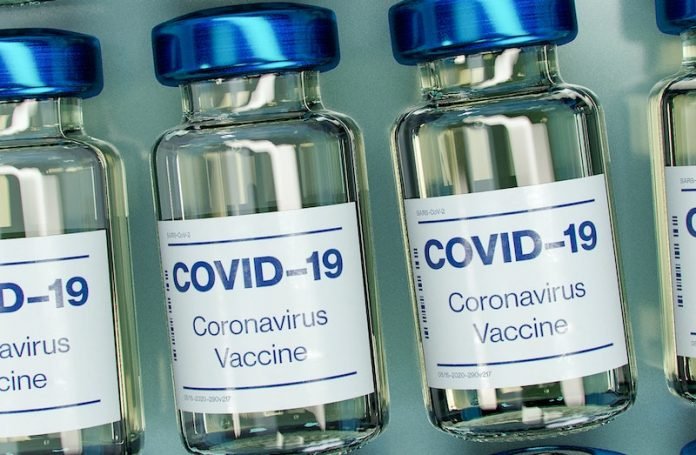
The first thing to know is: The COVID vaccines are safe, effective, and necessary. Doctors recommend them and the vaccines are available to everyone ages 12 and older in New York state.
But individuals and health care providers should talk about the timing of imaging tests around vaccination. These include CT and PET scans, mammograms, and other scans used to screen, diagnose, or follow the course of illness.
In peer-reviewed medical journals, researchers are studying and sharing information on the significance of timing—including this recent commentary in The Lancet Oncology by Peter Prieto, M.D., M.P.H., of the Wilmot Cancer Institute.
Why is it important to tell your doctors when you received the vaccine?
Because a common side effect of the COVID-19 vaccines are temporary swollen lymph nodes, which can show up on imaging scans in the days and weeks after vaccination.
This is a natural and expected reaction to the shot, a positive sign that the vaccination is working as the body mounts an immune response. Often, a person will not even realize they have enlarged nodes.
But if you’re getting an imaging test, the nodes can raise red flags, said Jennifer Harvey, M.D., Chair of Imaging Sciences at the University of Rochester Medical Center. As more people are vaccinated, it’s becoming more common to see enlarged nodes on scans, she said.
If a patient is suspected to have cancer or has the disease and is undergoing follow-up imaging tests, the swollen lymph nodes may require investigation, said Susan Hobbs, M.D., Ph.D., head of cardiothoracic imaging at URMC.
Recently, for example, Hobbs was caring for two patients with lung cancer. Their scans showed “hot” lymph nodes—nodes with high metabolic activity—on the same side as the tumor and also near the arm to which the vaccine was injected.
It was important to biopsy the lymph nodes to sort out whether the abnormality was due to the vaccine or cancer.
It’s important for cancer patients to discuss vaccine timing with their oncology care teams, she said.
A case study shows the value of doctor-patient communication, education
Lara Press-Ellingham, 48, of Fairport, was diagnosed on Dec. 1, 2020, with melanoma on the left shoulder.
Her surgeon, Prieto, an assistant professor of Surgical Oncology at URMC, removed the skin cancer on Dec. 11, and pathology reports indicated it was early-stage, with micro metastasis to one lymph node.
Later that month, on Dec. 31,2020, she received her first dose of the COVID vaccine (Moderna). It was early in the vaccine rollout and not much was known about side effects, but she was eager to protect herself.
On Jan. 5, 2021, she had a PET scan to determine if the melanoma had spread beyond that one lymph node.
The scan results were worrisome, showing three nearby regions of hot lymph nodes—but when a biopsy was performed, the results came back negative for melanoma.
“We were somewhat relieved,” Press-Ellingham recalled. “But then Dr. Prieto said: ‘If it’s not melanoma, I really need to know what it is, so we’ll have to do more surgery.'”
That’s when it became clear that the COVID vaccine may be the culprit. They were discussing a possible surgery date of Jan. 29, when Press-Ellingham told Prieto that she would be getting her second dose of the COVID vaccine the day before, on Jan. 28.
“I asked, “Is that a problem?” and the conversation just stopped. Then, he asked me about the date of my first vaccine and when we pieced it together he felt strongly that my abnormal PET results were related to that shot,” she said.
“Peter did a great job of explaining that the vaccine did exactly what it was supposed to do.”
They decided to pause more surgery. She received her second vaccine dose on Jan. 28, as planned—but Prieto arranged for it to be injected into her thigh instead of the arm.
Five days later, on Feb. 5, she had a follow-up PET scan and the results were “exactly what we were hoping for,” Press-Ellingham said.
“This time the arm region was completely quiet but the lymph nodes in the groin area were lit up,” she said, proving that the temporary flare-up in her upper left side was due to the first vaccine.
Her advice? “Slather yourself with sunscreen and see a dermatologist regularly. Also, everyone should get the vaccine as soon as possible. We should expect side effects. They’re normal and nothing to be scared of.”
Prieto added his own thoughts: “This is by no means meant to discourage vaccination,” he said, “but it’s important that vaccination history is disclosed and considered, as oncologists confront confounding images.”
“More oncologists and physicians are aware of this now,” he added, “but it is a unique problem connected to perhaps the largest public health event and vaccination effort of our lifetime.”
What about mammograms and COVID vaccine?
Breast imaging specialists have also been seeing temporary, enlarged lymph nodes on the side of the vaccine injection.
The nodes can inadvertently cause a mammogram to look abnormal even if no cancer is present, said Avice O’Connell, M.D., director of Women’s Imaging at URMC.
But she urges people to not delay their routine mammograms; delaying raises the risk of finding cancer later, when it’s less treatable. Ideally, women should schedule a screening mammogram a week before the COVID vaccine.
If that’s not possible, she said, get the vaccine and the mammogram as soon as you can—and be sure to tell the radiologist and mammography staff about your vaccine dates and which arm received the shot.
This recent report from the Journal of the American College of Radiology presents a management plan for radiologists in the context of COVID-19 vaccination.



